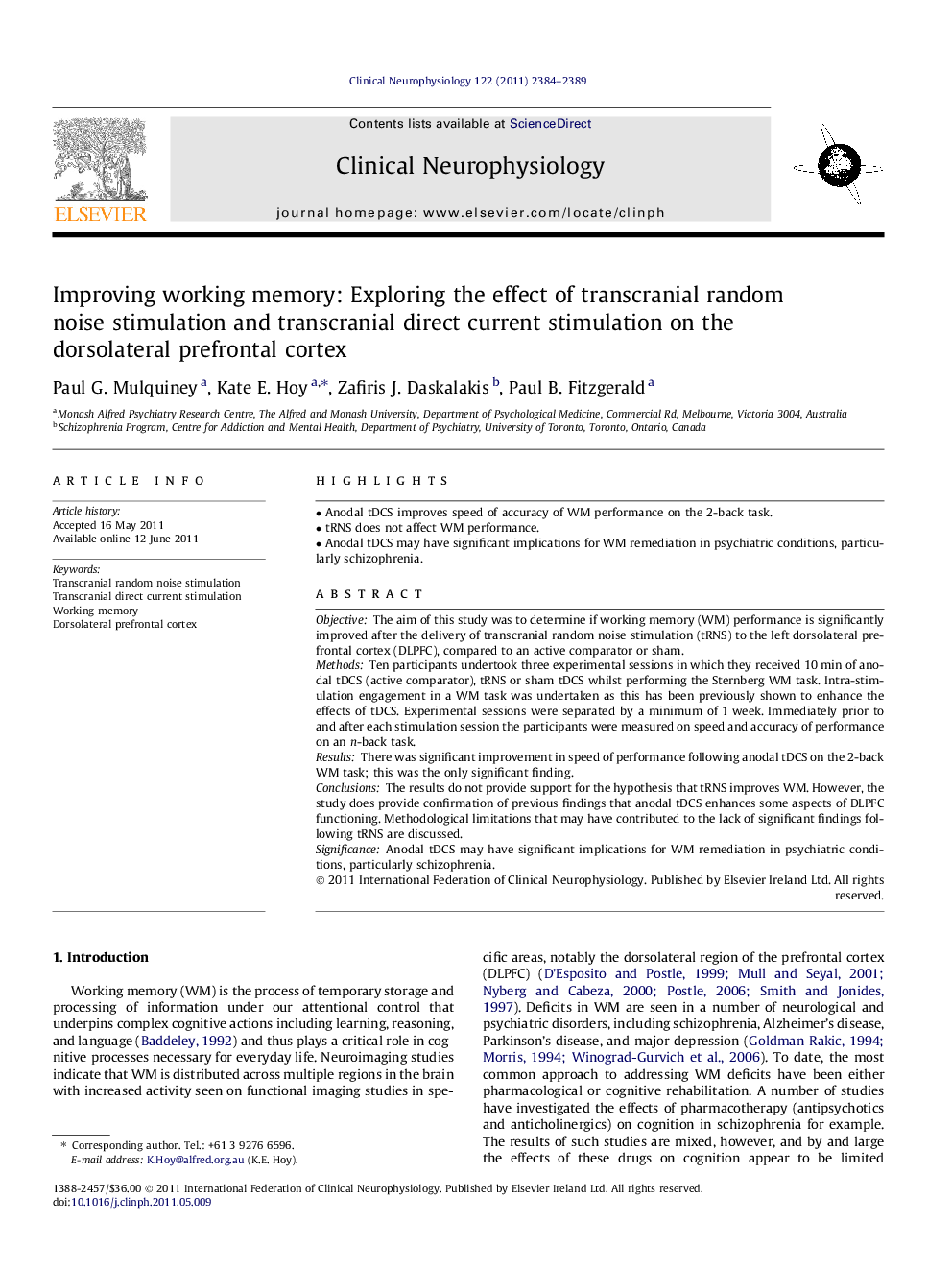| Article ID | Journal | Published Year | Pages | File Type |
|---|---|---|---|---|
| 3043974 | Clinical Neurophysiology | 2011 | 6 Pages |
ObjectiveThe aim of this study was to determine if working memory (WM) performance is significantly improved after the delivery of transcranial random noise stimulation (tRNS) to the left dorsolateral prefrontal cortex (DLPFC), compared to an active comparator or sham.MethodsTen participants undertook three experimental sessions in which they received 10 min of anodal tDCS (active comparator), tRNS or sham tDCS whilst performing the Sternberg WM task. Intra-stimulation engagement in a WM task was undertaken as this has been previously shown to enhance the effects of tDCS. Experimental sessions were separated by a minimum of 1 week. Immediately prior to and after each stimulation session the participants were measured on speed and accuracy of performance on an n-back task.ResultsThere was significant improvement in speed of performance following anodal tDCS on the 2-back WM task; this was the only significant finding.ConclusionsThe results do not provide support for the hypothesis that tRNS improves WM. However, the study does provide confirmation of previous findings that anodal tDCS enhances some aspects of DLPFC functioning. Methodological limitations that may have contributed to the lack of significant findings following tRNS are discussed.SignificanceAnodal tDCS may have significant implications for WM remediation in psychiatric conditions, particularly schizophrenia.
► Anodal tDCS improves speed of accuracy of WM performance on the 2-back task. ► tRNS does not affect WM performance. ► Anodal tDCS may have significant implications for WM remediation in psychiatric conditions, particularly schizophrenia.
